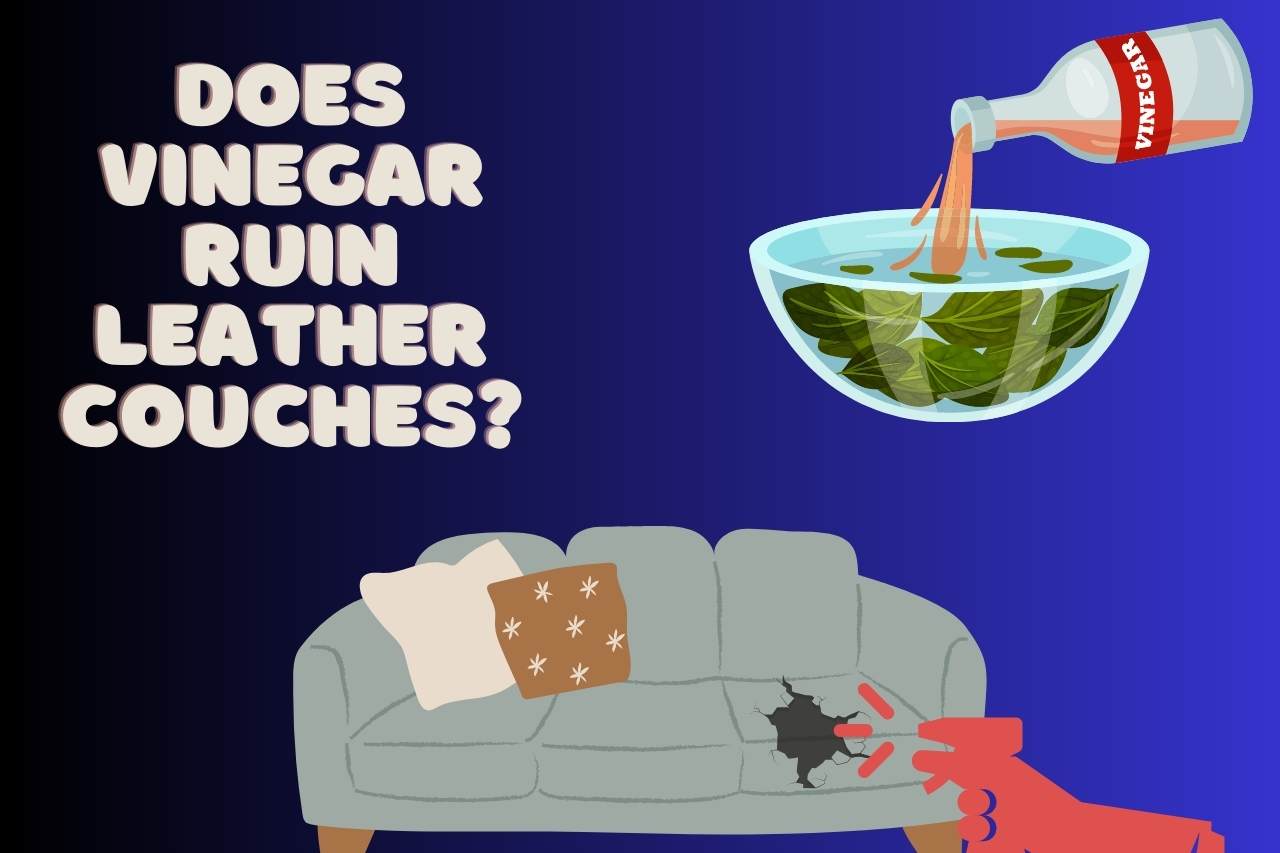How to Remove Sticky Residue from Leather Couch? Easy Ways!
If you’re looking to find ways how to remove sticky residue from the leather couch, you have come to the right place. Leather is such a luxury in homes. Leather couches are expensive and high maintenance. They are long-lasting when used carefully. Protecting these leather couches can be a battle, especially with pets and little kids around. When the couch has sticky residue left on them, it is very difficult and expensive to clean.
In this article, we will discuss what could possibly cause you to have a sticky residue on couches, identify what type of leather couch you have, how to remove the residue, and more. Keep reading to find out.
What Causes Sticky Residue on Leather Couches?
People spend most of their free time on either their couches or their beds. Whether it’s during visits from family or friends, whether it’s a family movie night, sometimes we even tend to have small naps on our couches. When spending time on the couch, we use a lot of body oil that could stain the couch or food residue, etc. let me walk you through some very common causes for couch staining.
- Spills are a major staining and sticky residue for which we all have at least once cleaned our couches. Sometimes we spill fruit juices, milkshakes, oils and creams, ointments used for wounds, or even glitter and other slimy toys kids use to play around the house with.
- Body oils and fluids are other common problems. Sometimes we tend to apply balms or essential and other body oils and sit or nap on our couches; they leave stains that are hard to remove. Even sweat and blood from injuries or accidents could stain the couch, leaving a sticky residue.
- Too much conditioning or detergent used on the couch, which is more than necessary, could leave sticky residue on the couch too.
- We eat food like pizza or burgers to any other greasy food with sauce and other ketchup, especially on movie nights; when these food grease stains, they leave sticky residue on the leather couch.
- Another reason would be exposing the couch to direct sunlight; when you do this, the natural oils on the leather are released, leaving a sticky residue.
Identifying the Type of Leather
It is important for us to identify the type of leather used on our couches before we start cleaning. Different types of leather require different forms of cleaning.
There are three main types of leather used for furniture. Here are some of the ways to identify the leather type of your couch.
Aniline leather; this type of leather is dyed with soluble dye. This type of dying doesn’t crate any topcoat layer on the couch. And the leather actually shows visible grains, porous and hair cells. The color isn’t uniform on the surface. Prefers light cleaning because less protected on the surface.
Semi-aniline and pigmented leather; when dyed, the color is uniformly produced on the leather surface. The leather also has a protected top layer. The leather is capable of holding tough cleaning. Both are very durable and stiff compared to pure aniline leather.
So, depending on the leather, we need to avoid using alkaline or ammonia cleaning products, well as other harsh chemicals.
How to Remove Sticky Residue from the Leather Couch?
If the leather on your couch is pure aniline, start with a light cleaning; for example, first, take a clean microfiber cloth, wet it with some water, and try wiping the sticky residue.
If the residue is something like sauce or ketchup, we could remove it without exposing the leather to chemical treatment. Otherwise, try some mild soap or leather cleaner to remove the residue.
If you happen to have semi-aniline or pigmented leather, try using a good brand of leather cleaner. Something like the Kera Lux basic cleaner would do. But before you try any chemicals on the leather couch, clean it using whatever DIY you can access at home. For example;
Start with distilled or lukewarm water and a soft sponge. For extra effectiveness, you could also add some baking soda or vinegar to the solution to break down the hardened sticky residue.
All you have to do is soak the sponge in the solution, squeeze out the excess water, and wipe it on the stained surface. If the stain is stubborn and won’t budge, sprinkle some baking soda on the surface and let it rest a little.
Then dip the sponge into the solution and start scrubbing gently until the residue is gone. Then use some clean water and soak a towel or microfiber cloth and gently wipe the surface and let it dry.
If the sticky residue is due to ink, take a small cotton ball with some alcohol or hand sanitizer and dab the inked surface. Then wipe with a clean cloth later. We can use leather conditioner too. Make sure not to use it often; just once or twice a year would be fine.
Soak with a little bit of conditioner onto a damp cloth and wipe the couch, leaving it overnight. Then use a soft dry towel and wipe the surface again to remove excess conditioner from the couch.
Can I Clean a Leather Sofa with Soapy Water?
Yes, absolutely; make sure the soapy solution does not contain any bleach or other strong detergent and cleaning liquids that could lather excess soapy form or get absorbed into the leather. The soapy solution should be of very mild soap and distilled or warm water. Use a sponge or a microfiber cloth to gently wipe the stain away.
Does Vinegar Ruin Leather Couches?
Surprisingly not at all. Vinegar is a great cleaning supply for leather couches. If you happen to have a strong and durable leather couch with a good protective layer, you couldn’t go wrong with vinegar for cleaning. You could either dilute the vinegar in water and wipe it with a soft cloth or directly soak a damp cloth with white vinegar and wipe the area.

What is the Best Home Remedy to Clean a Leather Sofa?
There isn’t one best cleaning remedy for leather sofas, and there are a few we could use to clean leather sofas with some basic DIY home remedies. For example;
The most common form of cleaning is a 1:1 ratio of white vinegar with water. Use this solution to clean with a soft cloth.
The other uses a spritz spray mechanism with half a cup of olive oil and one of four cups of vinegar in a spray bottle. Spray the solution on the residue and leave it on the leather for a few minutes before wiping it away clean.
People also try using toothpaste. We can apply some toothpaste that is not in gel form. And place it on a toothbrush and scrub the surface gently in a circular motion. Then wipe the toothpaste off with a dry cloth or paper towel to clean the surface of the toothpaste.
You may also try nail polish or alcohol by dabbing the stain ad wiping it with a cloth. This is an effective method too.
Watch this video,
Video Credits – Favored Leather
You May Also Like






